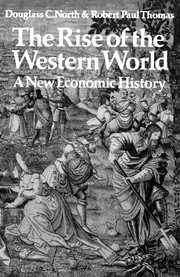Book contents
- Frontmatter
- Contents
- Preface
- PART ONE THEORY AND OVERVIEW
- PART TWO 900–1500
- 3 Property Rights in Land and Man
- 4 Economic Conditions at the End of the Early Middle Ages
- 5 The High Middle Ages: A Frontier Movement
- 6 Thirteenth-Century Europe
- 7 The Fourteenth and Fifteenth Centuries
- PART THREE 1500–1700
- Epilogue
- Bibliography
- Index
4 - Economic Conditions at the End of the Early Middle Ages
Published online by Cambridge University Press: 05 March 2012
- Frontmatter
- Contents
- Preface
- PART ONE THEORY AND OVERVIEW
- PART TWO 900–1500
- 3 Property Rights in Land and Man
- 4 Economic Conditions at the End of the Early Middle Ages
- 5 The High Middle Ages: A Frontier Movement
- 6 Thirteenth-Century Europe
- 7 The Fourteenth and Fifteenth Centuries
- PART THREE 1500–1700
- Epilogue
- Bibliography
- Index
Summary
That the Middle Ages were an unchanging economic plateau was once the prevailing opinion of historians. Along with its theoretical underpinning, the stage theory of history, this view has now been consigned to the intellectual rubbish heap. Today's scholars generally agree that the period under consideration was a dynamically expanding era. Certainly from the eleventh century, if not before, commerce burgeoned, cities were founded and grew, and economic specialization came into its own.
During the important historical era of the high Middle Ages (1000–1300) the focus of the development of the Western World shifted once and for all from the classic lands of the Mediterranean to the plains of Northern Europe. To explain these phenomena satisfactorily has become one of the great historical quests, and the problem dominated the attention of the great historian Henri Pirenne. Although the Pirenne thesis has been all but disproved, the question he concentrated upon remains one of the great historial issues: Why did Northern Europe develop during the high Middle Ages to attain lasting dominance?
Labeling this development a commercial by-product of the crusades, which re-opened the Mediterranean Sea to trade, Pirenne saw the expansion of Northern Europe as the direct response to an external stimulus – the reaction of its inhabitants to the opportunity to reap gains from trade with other areas of the Mediterranean. The host of scholars who arose in opposition to Pirenne, after destroying his thesis in detail, have almost exclusively focused upon factors internal to the society of Northern Europe.
- Type
- Chapter
- Information
- The Rise of the Western WorldA New Economic History, pp. 25 - 32Publisher: Cambridge University PressPrint publication year: 1973
- 1
- Cited by

